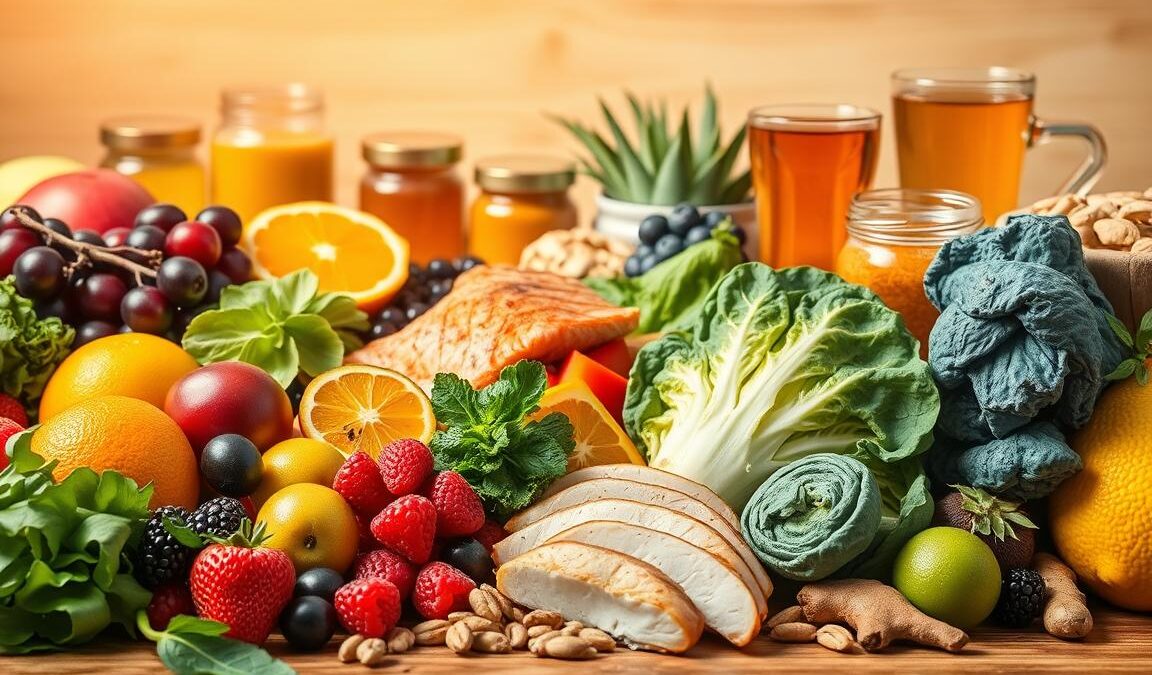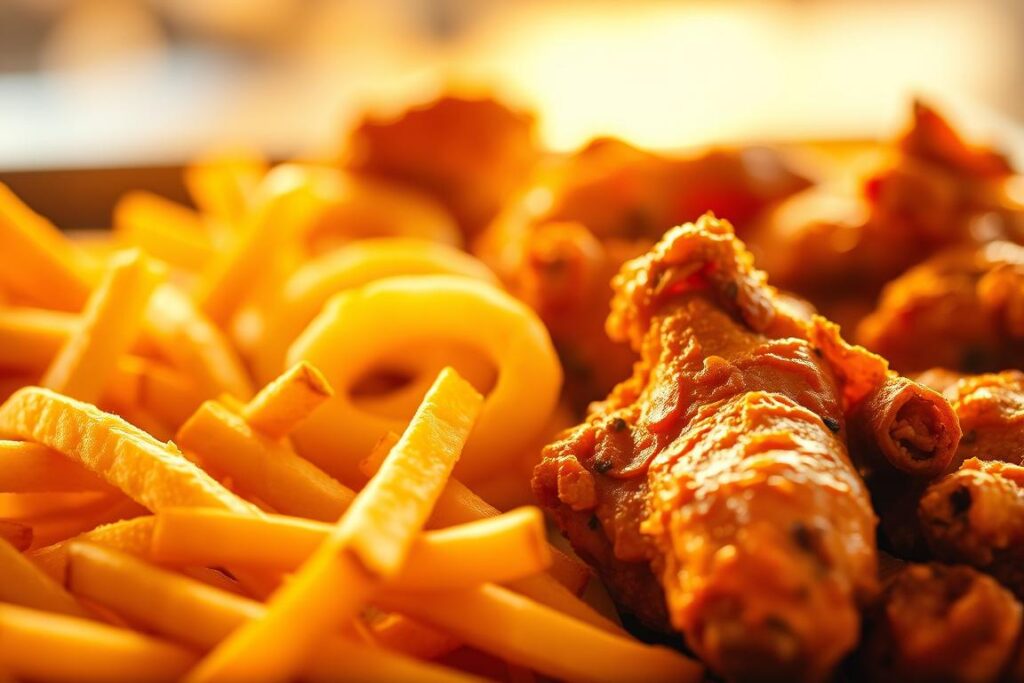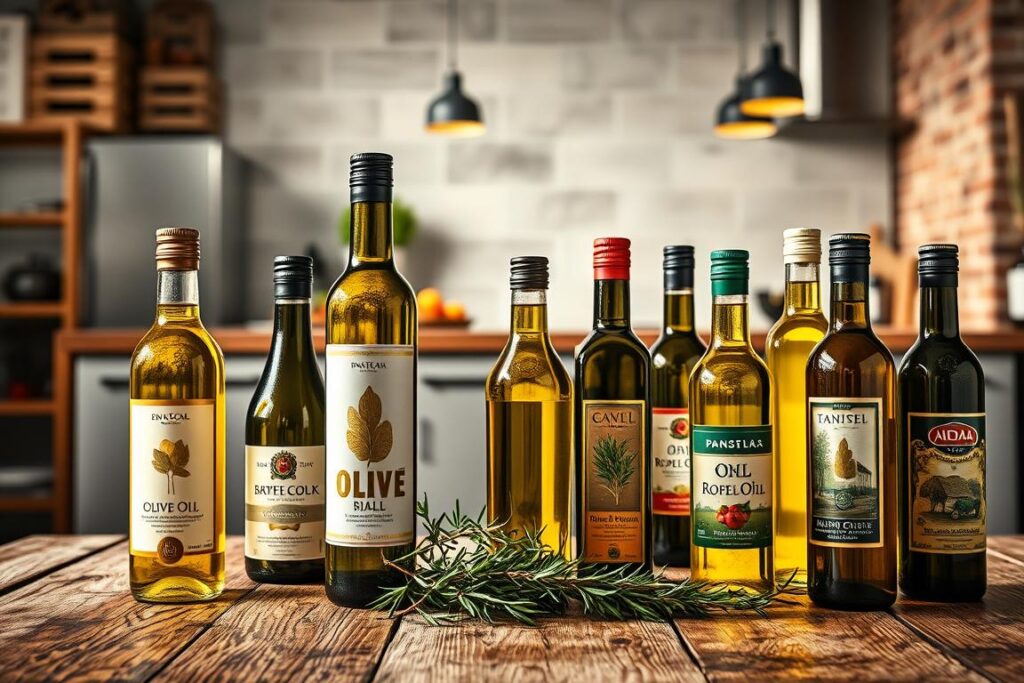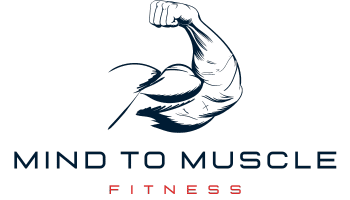
Anti‑Inflammatory Muscle Diet to Speed Up Recovery
You want faster recovery and less soreness, so an anti-inflammatory muscle diet gives your body the raw materials it needs to repair and adapt. This approach focuses on simple, everyday foods—berries, fatty fish, broccoli, avocados, turmeric, and extra virgin olive oil—that help reduce inflammation while still letting healing happen.
How will this help you right away? Eat protein plus carbs within two hours after training to rebuild and replenish. Smart choices like Greek yogurt with fruit or a turkey sandwich on whole‑grain bread are easy, tasty, and practical.
Over time you’ll see real benefits for performance, sleep, and long‑term health. Use batch cooking, ready‑to‑eat staples, and antioxidant‑rich meals to make consistency simple. Focus on timing, real foods, and small swaps to keep soreness down and recovery up.
Key Takeaways
- Choose antioxidant-rich and omega‑3 foods to reduce inflammation and support recovery.
- Eat 20–40 g protein plus carbs within two hours of training for faster repair.
- Use simple, US-friendly staples and batch cooking to stay consistent.
- Swap common soreness culprits with tasty, evidence-backed options.
- Focus on timing and composition, not quick fixes, for lasting benefits.
What “anti-inflammatory” really means for sore muscles right now
Feeling sore today? Let’s break down the body’s quick and slow responses.
Acute inflammation is the fast, useful process that follows stress or small injury. You see redness, feel swelling, and notice pain. This is the body fixing micro‑tears from a lift or run. It should start and then stop.
Chronic inflammation is different. It simmers over months or years. It links to heart disease, type 2 diabetes, some cancers, and ongoing pain. Why care? Because daily choices change this long‑term state.
How nutrition shifts the balance between pain and performance
What can you do right away? Choose foods that support resolution, not suppression. Your immune system uses chemical signals to control repair. Nutrition can nudge those signals toward calm instead of escalation.
Cut back on added sugars, excess alcohol, and ultra‑processed items. Add foods rich in antioxidants, omega‑3s, and polyphenols. The benefits show up as less next‑day pain, steadier energy, and faster readiness for the next session.
- Acute = short, helpful, temporary.
- Chronic = low‑grade, linked to health conditions.
- Food choices and lifestyle tilt the process toward healing.
| Feature | Acute Response | Chronic Response |
|---|---|---|
| Duration | Hours to days | Weeks to years |
| Signs | Redness, swelling, sharp pain | Low pain, fatigue, systemic effects |
| Main drivers | Exercise stress, injury, infection | Poor sleep, excess alcohol, poor foods, stress |
| Practical action | Rest, protein + carbs after training | Daily food swaps, sleep, less alcohol, stress control |
The science of DOMS and recovery foods
After a tough workout, tiny damage starts a chain reaction that you can actually influence.
Micro‑tears and timing: Small fiber damage sparks immune signaling. That is why soreness usually peaks 24–72 hours later. Cleanup cells arrive, remove debris, and start repair. This process helps you grow stronger, but it can also increase pain if it goes on too long.
Antioxidants and omega‑3s: Colorful produce supplies polyphenols and flavanols that act as antioxidants. They neutralize free radicals made during hard efforts without blocking the training effect. Fatty fish gives EPA and DHA. Your body converts these into resolvins and protectins—compounds that actively resolve inflammation.
- Anchor meals with colorful produce, a quality protein, and some omega‑3s each day.
- Use treats in moderation, and buffer them with nutrient‑dense choices that combat inflammation.
- Sleep, stress, and hydration change how signaling compounds behave, so address those too.
Quick comparison: timing and key compounds
| Stage | Main action | Helpful foods |
|---|---|---|
| 0–24 hours | Damage signaling | Protein + carbs, water |
| 24–72 hours | Cleanup and peak soreness | Colorful produce (antioxidants) |
| Resolution | Repair and reduced pain | Fatty fish (EPA/DHA → resolvins) |
Post‑workout plate: protein and carbs that rebuild fast
The two hours after a session are your best chance to jump‑start recovery. Aim for a focused plate that gives your body quick protein and carbohydrates so you feel better sooner.
The recovery window: aim for 20–40 grams of protein
Target 20–40 grams within two hours of finishing. That range supplies the amino acids your body needs to repair tissue and limit next‑day pain.
Smart carbs to replenish glycogen and reduce fatigue
Add carbs with that protein. Carbohydrates speed nutrient delivery into cells and refill glycogen so you recover performance faster.
Simple combos to keep it realistic on a busy day
Pick one go‑to combo and repeat it until it feels automatic. Here are practical, US‑friendly options you can prep or grab fast:
- Greek yogurt with fruit (protein + carbs + micronutrients)
- Protein shake + banana for quick digestion
- Turkey on whole‑grain bread for an easy assembled meal
- Chocolate milk as a fast, balanced recovery drink
Extra tips: Use lean meat, eggs, tofu, or dairy to hit protein targets. If you’re not hungry right away, start with a small snack and follow with a full meal. Hydrate—fluids and electrolytes aid nutrient transport and reduce lingering inflammation.
| Goal | What to target | Quick examples |
|---|---|---|
| Protein amount | 20–40 grams within 2 hours | Greek yogurt cup, 1 scoop whey, 3–4 oz turkey |
| Carbohydrate role | Restore glycogen, speed uptake | Banana, whole‑grain bread, fruit |
| When appetite is low | Small snack then meal | Chocolate milk, small shake, yogurt + berries |
| Daily habit | Spread protein across the day | 3–4 balanced meals or snacks |
Top anti-inflammatory foods to add today
Make your next grocery run a recovery boost by choosing foods with proven benefits. Pick items that provide specific compounds your body uses to resolve inflammation and support performance. Below are easy picks and plain-English notes so you know what to buy and how to use it today.
Fatty fish
Why: Salmon, sardines, and mackerel deliver EPA and DHA. Your body converts these into resolvins and protectins linked to lower CRP and better heart health.
Extra virgin olive oil and olives
Why: Oleocanthal and monounsaturated fats in olive oil provide ibuprofen-like effects and long-term oil benefits for the heart. Use for dressings and low-heat cooking.
Berries, cherries, leafy greens, and crucifers
Why: Berries and cherries pack anthocyanins and antioxidants that can help reduce soreness. Spinach, kale, broccoli, and Brussels sprouts supply sulforaphane and fiber to support recovery.
- Drink green tea or enjoy a small square of dark cocoa for catechins and flavanols that support vascular effects.
- Add tomatoes with olive oil, use mushrooms for selenium, and season with turmeric plus black pepper to boost curcumin absorption.
| Food | Key compounds | How to use today |
|---|---|---|
| Fatty fish | EPA/DHA (resolvins) | Bake salmon twice weekly; add canned sardines to salads |
| Olive oil & olives | Oleocanthal, MUFAs | Swap salad dressing, drizzle on cooked tomatoes |
| Berries & cherries | Anthocyanins, antioxidants | Keep frozen berries for yogurt or smoothies |
| Greens, tomatoes, mushrooms | Sulforaphane, lycopene, selenium | Stir-fry greens, cook tomatoes in oil, roast mushrooms |
Anti-inflammatory muscle diet: a practical framework
Want a simple framework you can use every day to support quicker recovery and steadier energy?
Start with clear daily targets. Aim for a rainbow of produce, steady fiber, and a small serve of healthy fats at each meal.
Daily targets: color diversity, fiber, and healthy fats
- Colors: Include at least three colors of vegetables and fruits at main meals and one at snacks to get varied phytonutrients that help inflammation.
- Protein: A palm-sized portion at each meal and one snack keeps repair on track without overthinking portions.
- Fats: Add one serving per meal from olive, avocado, nuts, or seeds to support nutrient uptake and hormones.
- Whole grains & fiber: Choose whole grains or starchy vegetables most of the time. Aim for 25 g/day for women and 38 g/day for men by mixing oats, beans, and produce.
Sample day: breakfast, lunch, dinner, and snacks that fight inflammation
Breakfast: Greek yogurt with berries, chia, and a drizzle of olive oil granola for crunch.
Lunch: Salmon and olive farro bowl with tomatoes, peppers, and lemon-olive dressing.
Dinner: Chicken or tofu with roasted broccoli and sweet potato, plus mixed greens.
Snacks: Protein shake with banana; or nuts and fruit; or hummus with carrots and whole-grain crackers.
| Target | What to choose | Why it helps |
|---|---|---|
| Colors per meal | 3+ colored vegetables/fruit | Diverse phytonutrients reduce excess inflammation and support recovery |
| Protein timing | Palm-sized portions, plus one snack | Steady amino acid supply for repair and less next-day soreness |
| Healthy fats | Olive, avocado, nuts, seeds | Support absorption, hormone balance, and long-term benefits |
| Fiber & carbs | Whole grains, beans, oats, starchy veg | Steady energy, gut support, and meets daily intake goals |
Foods that can crank up inflammation (and what to swap in)
Certain common foods can make recovery harder — but easy swaps can fix that. Below are practical changes you can use today. They cut exposure to harmful fats and added sugars without turning meals into a chore.

Fried foods and refined carbs
You’ll limit fries, fried chicken, and similar fast items. These foods form pro‑inflammatory byproducts when cooked at high heat.
Swap: baked potatoes, roasted carrots, or air‑fried options. Choose whole‑grain bread instead of white bread to steady blood sugar.
Processed meats and high saturated fat items
Processed meats like bacon and hot dogs raise inflammatory markers in studies.
Swap: fish, poultry, beans, or tofu. These choices reduce additives and improve nutrient quality.
Sugar‑sweetened drinks and alcohol
Trade soda and sugary drinks for water, seltzer with citrus, or unsweetened tea. Excess sugar links to weight gain and obesity risk.
Moderate alcohol. It disrupts sleep and slows recovery the next day.
Ultra‑processed oils and cooking choices
Cut back on packaged snacks made with cheap seed oils. Cook more at home and use olive oil‑forward dressings to control oil quality.
- Pick leaner meat cuts and avoid charring when you grill.
- Keep canned beans, pre‑cooked grains, and frozen vegetables on hand for quick, better choices.
- Treat swaps as upgrades, not restrictions — you’ll recover quicker and feel less bloated when you stick with them.
| Problem | Why it matters | Easy swap |
|---|---|---|
| Fried foods | High heat creates harmful compounds | Baked or air‑fried roots |
| Refined bread | Spikes blood sugar, boosts inflammation | Whole‑grain bread or seeded crackers |
| Processed meats | Additives linked to higher CRP | Fish, poultry, beans |
Why this helps: These swaps lower exposure to problematic fats and added sugars. They help reduce inflammation and support faster, steadier recovery.
Macro and micronutrient priorities for active bodies
Let’s set practical nutrient targets so food supports your training every day. Below are clear numbers and simple examples you can use to build plates without overthinking.
Protein quality and timing across the day
Target: Spread protein across 3–4 meals to stimulate synthesis repeatedly.
Aim for 20–40 grams at each sitting. Examples: Greek yogurt cup, 3–4 oz lean poultry, or one scoop whey. Space servings every 3–4 hours to keep recovery steady.
Carbohydrate types: whole grains, starchy vegetables, and performance
Prioritize carbohydrates from whole grains and starchy vegetables around training. Choose oats, brown rice, sweet potato, or quinoa to top up glycogen and sustain sessions.
Fat balance: omega‑3 vs. omega‑6 and cooking oils that help
Favor extra virgin olive oil for most cooking and dressings. Increase omega‑3s with fatty fish weekly or plant sources like flax and chia.
Limit ultra‑processed seed oils to keep inflammation lower and support long‑term heart health.
Fiber goals: 25 g (women) and 38 g (men) for gut and immune support
Hit 25–38 grams per day by mixing whole grains, beans, fruits, vegetables, nuts, and seeds. Fiber supports your gut and immune system, which helps recovery and overall health.
- Match portions to training load and use pre/post timing to guide carbohydrates.
- Season with herbs and colorful produce to add antioxidants without extra calories.
- Drink fluids to support circulation and limit stiffness.
| Priority | Target | Practical example |
|---|---|---|
| Protein | 20–40 g per meal | Greek yogurt, 3–4 oz chicken, 1 scoop whey |
| Carbohydrates | Whole grains/starchy veg around training | Oats, brown rice, sweet potato |
| Fats & oils | Use olive oil; boost omega‑3s | Salmon twice weekly; olive oil dressings |
| Fiber | 25 g (women) / 38 g (men) | Beans, fruits, veggies, whole grains |
Seven-day recovery-friendly meal inspiration
Use themed dinners to make healthy choices automatic and keep your recovery on track. Pick a pattern for each day so shopping and prep feel simple.
Rotation ideas to plug into your week:
- You’ll schedule two fatty fish nights, like salmon with quinoa and roasted Brussels sprouts or sardine‑olive pasta with tomatoes and herbs. (fish, fatty fish, fatty)
- Plan two plant‑protein bowls: lentils with sweet potato, kale, and tahini‑olive oil drizzle; or tofu stir‑fry with brown rice and peppers. (grains)
- Enjoy one olive‑oil‑based pasta night with whole‑grain noodles, broccoli, mushrooms, and grated Parmesan. (benefits)
- Pick one lean poultry night: grilled chicken with farro, cherry‑tomato salad, and arugula tossed in lemon and olive oil. (cherries)
- Choose one flex night for leftovers or eggs and avocado toast with mixed greens to keep prep light. (day)
Use tart cherries or cherry juice around hardest sessions to potentially reduce inflammation and speed readiness. Pair post‑workout protein and carbohydrates—Greek yogurt with fruits or a shake and banana—to lock in recovery benefits.
Quick compare
| Theme | Main foods | Why it helps |
|---|---|---|
| Fish nights | Salmon, sardines, quinoa | Omega‑rich fish supports repair and heart health |
| Plant bowls | Lentils, sweet potato, greens | Fiber, varied micronutrients, steady energy |
| Quick flex | Eggs, toast, salad | Low prep, retains protein and vegetables |
Sip green tea with afternoon snacks for extra polyphenols and focus. Keep vegetables and a variety of fruits at every meal so you get broad benefits with minimal effort.
Smart shopping and prep to make it stick
Small prep wins in the kitchen create big gains for recovery and energy. Want a system that saves time and keeps your meals on track all week?
US-friendly grocery list by category
- Produce (perimeter first): fresh greens, bell peppers, lemons, and frozen berries and greens.
- Proteins: canned salmon, tuna, sardines, chicken thighs, tofu, and a bag of lentils.
- Pantry & grains: oats, quinoa, brown rice, canned beans, and whole‑grain crackers.
- Oils & fats: extra virgin olive oil for dressings and a neutral oil for high‑heat searing.
- Snacks: Greek yogurt cups, nuts, hummus, and pre-cut veggies.

Batch-cook playbook: grains, greens, and proteins
Batch two grains (quinoa, brown rice) and roast a sheet pan of mixed vegetables on Sunday.
Cook two proteins—baked chicken thighs and a pot of lentils—so each meal starts ready to build. Mix a lemon‑garlic olive oil dressing to finish bowls quickly.
| Need | Best pick | Why it helps |
|---|---|---|
| Quick protein | Canned salmon, chicken thighs | Fast prep, boosts intake of omega‑3s and amino acids |
| Cost & waste | Frozen berries, greens | Lower cost, less spoilage, high nutrients |
| Everyday oil | Extra virgin olive oil | Flavorful for dressings and boosts healthy fats |
Supplements, safety, and when to talk to a pro
Supplements can help fill gaps, but they are not a shortcut to better recovery. Start by fixing the basics: timing your protein, eating a variety of whole foods, and staying hydrated.
Fish oil, curcumin, and tart cherry juice: benefits and cautions
Fish oil (EPA/DHA): If you eat little seafood, a fish oil supplement can lower some inflammatory markers for certain people. Quality, dose, and your health conditions matter. Choose third‑party tested products and tell your clinician if you take blood thinners.
Curcumin with piperine: Black pepper boosts absorption. Some formulations reach therapeutic levels; a pinch of spice in food usually does not. Effects depend on dose and product, so start low and watch for GI upset or interactions.
Tart cherries: Juice or concentrates may lessen soreness in some studies, but results are mixed. Test around heavy training blocks and track whether you notice a meaningful effect.
Why a registered dietitian can personalize your plan
- A dietitian tailors grams of protein, meal timing, and supplement need to your sport and health conditions.
- They review medications and GI history to avoid bad interactions.
- They help reduce reliance on processed meats and replace them with options that help reduce inflammation.
- They recommend third‑party tested brands and sensible starting doses, then monitor results over weeks.
| Supplement | Potential benefit | Key caution |
|---|---|---|
| Fish oil (EPA/DHA) | May lower inflammatory markers; supports heart and recovery | Check dose, quality; can affect bleeding risk with some meds |
| Curcumin + piperine | Improved absorption; may reduce markers in trials | Variable formulations; can upset stomach and interact with drugs |
| Tart cherry juice | May ease soreness for some athletes | Mixed evidence; added sugars in some products |
Bottom line: Use tea, spices, and whole foods rich in antioxidants daily. Treat supplements as targeted tools. Consult a registered dietitian or your healthcare team before adding new compounds, and track your response for several weeks to judge true effect.
Conclusion
Think of food as a daily tool that nudges recovery, heart health, and energy in the right direction. Small, consistent choices matter more than perfect meals.
Focus on whole foods: fatty fish, extra virgin olive oil, colorful fruits and vegetables, whole grains, and legumes. These patterns link to lower inflammation and better heart markers.
Limit fried foods, refined sweets, and ultra‑processed oils to cut drivers of chronic inflammation and obesity risk. Pair training with good sleep and regular meals to reduce pain and speed readiness.
Start with one change today—swap in extra virgin olive oil or add a cup of berries. Learn more about timing and recovery with the best timing for post‑workout supplements, and build from there.



